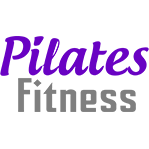
16 Feb IS IT GOOD OR BAD WHEN YOU EXECUTE THE FLOW ROUTINE FASTER THAN THE REST OF THE CLASS?
It’s been 7 weeks since we launched THE FLOW SERIES. We’ve got lots of positive feedback from the participants. More importantly, we have witnessed massive improvements in participants who have completed the January 10 Class Flow Challenge. Better postures, higher endurance, improved coordination, reduced body aches, brighter smiles and lovely glows on their faces! YAY!
Recently, I had chats with the Instructors to get their feedback on teaching the flow classes. I want to understand if you are coping well, if you are getting the maximum benefits at every class and what can we do to ensure that you are enjoying the class and developing yourself.

One key feedback highlighted was that some of regular participants are completing the flow way ahead of the rest.
So what does it mean if you can do the flow routine faster than everyone else in the class? Is it a good thing or a bad thing?
Haste makes waste.
When it comes to the flow series, the slower the better! Ideally, there should be a pause after every movement. It is the transition of movement that strengthens your core. When you rush through the exercises, you are just powering through your superficial muscles to get to the destination. Your core is disengaged. Rushing though the flow exercises reflects a lack of core control and may lead to build up of unnecessary tension. The objective of THE FLOW SERIES is the journey – not the destination. That is why we name this routine FLOW! You have flow from one movement to the next, with control and grace.
To get the most out of your next flow class, follow the tips below:
- In your next flow class, be observant. If you are executing the exercises ahead of the class, slow down.
- Isolate your muscles for each and every movement. You should be able to feel different muscles working harder for different movements. If you cannot identify specific muscle working when you are moving, then you are powering the movements and not using the right muscles.
- Pressure on your limbs or torso should be equally distributed. There should not be a lot of tension or pressure on one side or on one limb.
- Take a one second break in between each movement.
- Stare at the mirror at all times. Be mindful of your posture.
- Even if you know the sequence very well, try to move after the Instructor have given the cue. This will encourage you to execute step 4.
There’s a lot to take in. I know! So how can one possibly do all of above? Well, you can. Only when you go slow and focus on listening to your body.




No Comments